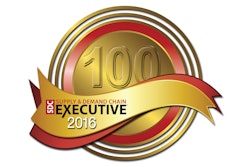
If chief procurement officers (CPOs) were to take a Neanderthal approach to their jobs it might look something like this: Whack suppliers over the head with clubs to compel them to do what they want, then, storm the C-suite and force executives to listen to their ideas. Unfortunately, caveman mentalities have no place in today’s business world, so CPOs must take a more finessed approach to their duties.
Collectively individual CPO’s approaches to business problems may differ, but recent surveys of top procurement officials, such as those done by The Hackett Group, Deloitte Consulting LLC and Ardent Partners Ltd., illustrate that the challenges they face are largely the same: Reducing spend, managing risk, becoming trusted advisors to the C-suite, fostering innovation, improving agility, and filling procurement offices with the right kinds of talent.
“I see four issues: Cost, innovation, supply chain disruption and bringing talent to procurement,” states Tania Seary, founding chairman of Procurious, an online business network for procurement professionals.
Studies are echoing what Seary is saying. Ardent Partners, a research and advisory firm focused on defining and advancing supply management strategies, processes and technologies, recently surveyed 330 CPOs and other procurement executives, and found that while the top challenges facing procurement shift up or down in order from the year prior, they tend to be the same handful of issues year to year, and include things like cost containment, talent needs and disruption.
“These issues are all C-suite issues,” Seary states. “There is a direct link between what CPOs are doing and what the C-suite is worried about. As such, there is a lot that can be done, and there is a great opportunity for procurement professionals to be a part of it.”
Cost Containment is Key
In 2016, Ardent Partners’ survey respondents identified the pressure to find more savings as their top concern. While this could spell doom and gloom in the business front, since cost containment tends to become an issue in more challenging economic times, Andrew Bartolini, managing partner and chief research officer at Ardent Partners, points out that, in 2009, nine out of 10 CPOs reported finding more savings as their top challenge. Yet, in 2016, just one in three CPOs reported this as their top challenge. “It’s still their top pressure but it appears less intense than in year’s past,” he says.
Christopher Sawchuk, principal and Global Procurement Advisory Practice leader with The Hackett Group, an intellectual property-based strategic consultancy, states that in its 2016 global survey of procurement executives, the priority has shifted back to cost as well. Sawchuk finds it likely this trend will continue into 2017. “The question is why? Certainly, some of it is due to the economic challenges that we’ve seen in some industries. In a revenue-challenged environment, procurement will focus more intently on cost in an effort to enable the companies it supports to maintain their margins.”
However, Sawchuk warns, “We can’t save ourselves to success. There is a diminishing level of return over time.”
That being said, Seary reminds that cost will always be a top priority for procurement. Strategic purchasing, leveraging technology in manufacturing and sourcing newer (less costly) materials are all ways to contain costs. “It [cost containment] is the biggest value we can bring to a business. We own this space,” she says.
A Seat at the Table
Research also reveals a continued need to elevate the status of procurement by better communicating its role. “Procurement needs to be able to explain the value proposition of what they bring to the organization … procurement adds a lot more value than simply cost savings,” Bartolini states.
There is a definite need to elevate the procurement professional to that of a trusted advisor, agrees Sawchuk. He points out that in 2015, the first year that “elevating the role of procurement to a trusted advisor” appeared in The Hackett Group’s annual Key Issues Study, it was identified as procurement’s top objective. In 2016, it remains a key priority for CPOs looking to generate additional value and expand their influence within their organizations.
And, that’s a good thing. “The idea of becoming a trusted adviser should not be an end goal in and of itself. It’s an enabler,” Sawchuk says.
Seary agrees noting that CPOs must define value and construct metrics around key business issues, so that there is a direct link between what they are doing and what the C-suite is worried about. “They cannot simply focus on cause and transaction-type metrics; the number of supplies reduced, the number of contracts renewed. These are not business metrics, they are procurement metrics,” she says. “They need to elevate the conversation and the way they are measured to align with the business strategy and objectives.”
CPOs might consider developing a balanced scorecard, such as Ardent Partners’ CPO Scorecard, to measure procurement’s performance against metrics that include:
- Hard financial metrics, such as savings and cash flow impact;
- Stakeholder metrics, such as supplier performance and risk and internal customer feedback;
- Process and technology metrics that measure procurement efficiency and activity; and
- People and knowledge management metrics, which look at staff competencies, training and retention.
Developing these metrics with the company CFO can help CPOs deliver a broad-based report card that demonstrates how procurement is performing in a range of areas, according to Bartolini.
Scorecard metrics can facilitate discussions that move beyond the numbers. “They have to put their company’s business into the context of what’s happening in the world and how procurement can add value to the business as it moves forward,” he says. “Procurement is the group that’s on the front lines ensuring that the innovative suppliers, the strategic suppliers, the leading suppliers in the market are the ones working with the company. If you’re going to be more reliant on your supply chain, you need an organization to manage it more effectively, communicate goals and objectives, and make sure that the supply chain is the right supply chain.”
But there is a disconnect, he warns. Ardent Partners’ survey found that two-thirds of procurement organizations fail to align what they’re doing with what the enterprise as a whole is focused on. This, Bartolini, spells opportunity. He explains, “If it’s not important to the C-suite, it should be significantly less important to the procurement organization.”
Procurious’ recent Big Ideas Summit supported this finding. CEOs and CFOs from across the globe reported they wanted procurement to share more than just how they cut costs. “They said they wanted to hear how procurement is changing the whole value chain, thinking of new ways of doing business, and capturing the benefits of new technologies,” Seary says.
Be Ready to Move
The concept of agility within procurement also ranks as a top challenge. As companies brace themselves for continued business uncertainty and increased risk, along with elevated struggles to grow revenue, procurement must ready itself for these changes. Here agility is important.
“Agility means you have the ability to adapt quickly to environmental changes,” says Sawchuk. “Organizations need to ask themselves how they are weaving agility into every dimension of their operating model.”
He cites the well-known example of Uber as being a disruptive innovation force. “Who in the taxi industry was able to predict that their long-term industry model would be disrupted by a technology company out of San Francisco?” he asks. “There are a lot of things changing, and they are going to change with more velocity than we have ever seen before. Our ability to be agile in this environment will be a critical capability.”
Sawchuk recommends a few action items for procurement organizations to help improve their agility:
1) Apply the agility test to your own procurement service delivery model. Find the gaps and determine what needs to change.
2) Evaluate your current supply risk management program not only for depth, but for speed and agility.
3) Invest in predictive capabilities, pilot emerging technologies and work to expand existing supplier networks into interconnected business communities.
Bartolini recommends CPOs use Ardent Partners’ CPO Agility Agenda to help them “operate predictably in the face of uncertainty, complexity and constant change.” Available at www.ardentpartners.com, the tool helps CPOs assess their organization’s agility strengths and weaknesses in four key areas: organizational structure, procurement strategies, technology and performance. The company can then take action to improve in the areas identified as weaknesses.
“New products come in and out, and market leaders are often out of business within three to five years,” he says. “This environment requires sourcing teams and category managers to remain acutely aware of the direction of their key supply markets, and follow where the market leadership is heading and where the innovations are.”
Cultivating Talent to Keep Procurement at the Executive Table
A seasoned procurement executive at a fast-growing American apparel company describes himself as “old enough to be the dad of 98 percent of the people” who work at his company. But when he opens his mouth, everyone listens. Why? Because younger professionals within his company have little practical understanding of how to run a supply chain. Everyone from the CEO down to district and regional managers are finally getting it. How? He has gone old school: They learn by doing.
This executive helped create a rotational program for high performers that includes procurement. The bottom line for the company is that procurement is front and center at helping to ensure that the company has the right products at the right place, and at the right time. The rotational program ensures the company has the right talent in place, and eases some of the challenges procurement faces internally.
This seasoned CPO is addressing what Deloitte Consulting LLP recently confirmed in its fifth annual, 2016 Global Chief Procurement Officer Survey. Participants in the survey indicated procurement is maturing, but warned they may not have the requisite talent to maintain its position in the organization going forward. In 2014, 57 percent of CPOs responded that their teams did not have the skills or capabilities to deliver their procurement strategy. This year that number has increased to 62 percent.
This issue has come up before. Deloitte identified a looming talent crisis in its first Global CPO survey in 2011. Five years later, however, the concern is becoming more real, and more immediate. Progress has been slow in building core capabilities around talent, and there remains a long way to go.
As the need grows for procurement to get the right mix of talent on their teams to effectively execute more complex strategies, there are several things companies can do right now to help advance the potential of procurement:
1) Assess current talent versus the company’s strategic objectives. Where are the biggest gaps?
2) Establish a plan to mitigate any gaps.
3) Upskill talent through regular targeted training and mentoring.
4) Hire for and develop the right combination of “hard” and “soft” skills to enable increased engagement with business teams and suppliers.
5) Hire new talent. Procurement is transforming itself into a more strategic function and needs talent where it didn’t exist before.
6) Cultivate existing talent. Look within the organization (even beyond procurement) for talent that can be mentored and grown into effective procurement leaders of tomorrow.
Top CPO Challenges by the Numbers
60% - Report procurement lacks a clear digital journey.
62% - Number of CPOs who believe their team lacks the skills and capabilities to deliver their procurement strategy.
74% - Respondents stating cost reduction is their top priority.
96% - Identified partnering with the CFO as critical to their mission.
--Source: Deloitte Consulting LLP’s 2016 Global Chief Procurement Officer Survey







